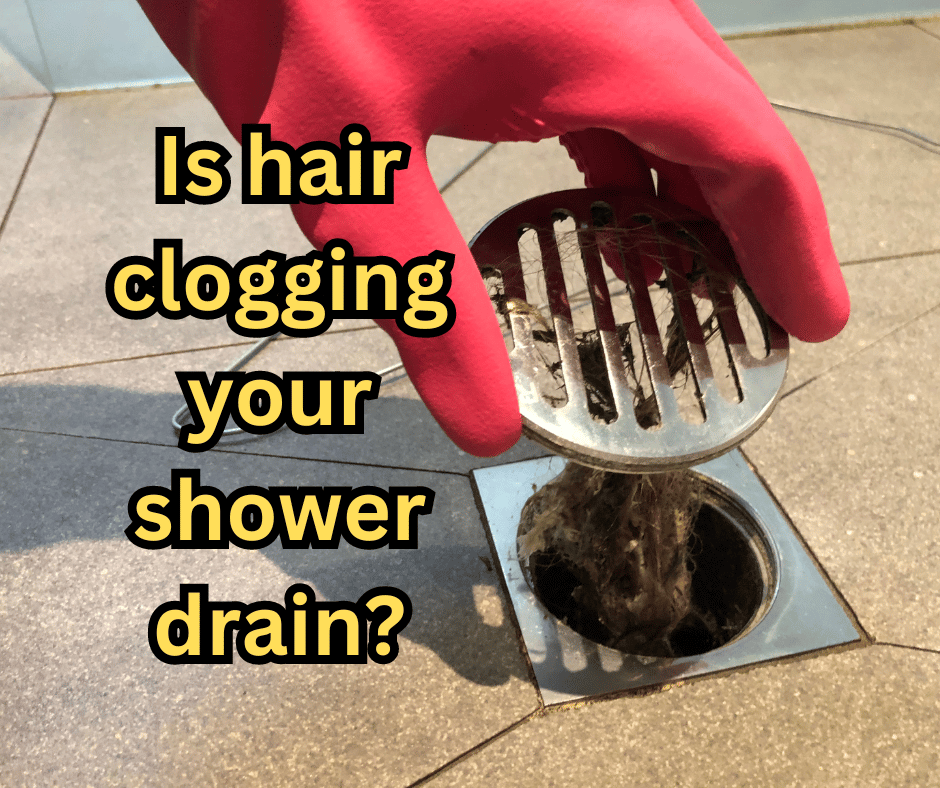
When considering household plumbing challenges, it’s crucial to understand the unique properties of hair that predispose it to causing drain blockages. Hair, by its very nature, possesses a combination of strength and flexibility, making it both resilient and tricky to manage once it finds its way into your plumbing system.
How Hair Buildup Causes Clogs
Hair accumulation in drains is a gradual process but can escalate quickly. When individual strands of hair are washed down the shower drain, they don’t flow smoothly through the plumbing system. Instead, they often get caught on rough surfaces inside the pipes or on existing partial blockages. Over time, more hair strands join this initial clump, forming a dense, matted web. This web of hair then acts as a net, trapping other debris, soap scum, and product residue, leading to significant blockages.
Moreover, it’s important to understand that the consequences of such blockages can extend beyond your shower. A clogged shower drain can affect the overall plumbing system, potentially causing issues in other fixtures. For instance, a notable symptom could be your toilet bubbling when the shower is running, indicating a deeper plumbing issue. For a detailed explanation of this phenomenon and its relation to shower drain clogs, visit our comprehensive guide at Why Is My Toilet Bubbling When The Shower Is Running?. This additional resource offers insights into the interconnected nature of household plumbing and the broader implications of a clogged shower drain.
By understanding the process of hair accumulation and its potential impact on your entire plumbing system, you can take more informed steps to address and prevent these common issues.

Signs of a Hair-Clogged Drain
Recognizing a hair-clogged drain early on can save you from more severe plumbing issues. Some common signs include:
- Slow Draining Water: If water pools at your feet during a shower and drains slower than usual, it’s often an indicator of a developing clog.
- Standing Water: When water fails to drain completely and remains in the shower basin, this is a clear sign of a significant blockage.
- Gurgling Sounds: Unusual noises from the drain can indicate disrupted water flow, often caused by hair and debris buildup.
- Unpleasant Odors: Trapped hair and debris can start to decompose, emitting bad smells from the drain.
If these symptoms are present, and you have long hair or share your space with someone who does, it’s likely that hair is a primary contributor to the clog.
Preventive Measures for Long-Haired Individuals
For those with long hair, some proactive steps can significantly reduce the risk of clogs:
- Brush Hair Before Showering: This simple act removes loose strands that might otherwise go down the drain.
- Use a Hair Catcher: Installing a hair catcher or drain guard in your shower can trap hair before it enters the plumbing.
- Regular Drain Cleaning: Periodically clean the drain to remove any hair buildup. This can often be done manually or with gentle cleaning solutions.
- Routine Maintenance: Keep an eye on your drain’s performance and address any slow drainage immediately to prevent severe clogs.
The Role of Drain Guards and Strainers
Drain guards and strainers are essential tools in combating hair-related clogs. They come in various types, including:
- Mesh Strainers: These are simple and effective, catching hair while allowing water to pass through.
- Silicone Protectors: These often feature a flexible design that fits snugly over the drain.
- Shower-specific Hair Catchers: Designed to fit the unique contours of shower drains, they are particularly effective for longer hair.
When selecting a drain guard, consider the size and shape of your shower drain, as well as the ease of cleaning the guard. Regular maintenance of the drain guard, including routine removal of accumulated hair, is crucial for it to remain effective.
Solutions for Hair-Clogged Drains
If you’re facing a hair clog in your drain, there are several DIY methods you can try before calling in a professional:
- Manual Removal:
- Use gloves and a flashlight to inspect the drain.
- If the clog is visible and within reach, carefully pull it out with your fingers or use tweezers.
- Plunging:
- Cover the overflow hole with a wet cloth to create a seal.
- Place a plunger over the drain and plunge vigorously several times.
- This method can help loosen and dislodge hair clogs.
- Homemade Drain Cleaner:
- Pour a cup of baking soda into the drain, followed by a cup of white vinegar.
- Let the mixture sit for 10-15 minutes to break down the clog.
- Flush with hot water to clear the debris.
- Drain Snake or Wire Hanger:
- Straighten a wire hanger or use a drain snake to reach deeper into the pipe.
- Carefully insert it into the drain and twist to catch and pull out the hair.
If these methods don’t resolve the issue, or if the clog is too deep or severe, it’s time to call a professional plumber. They have the tools and expertise to safely and effectively clear stubborn clogs without damaging your plumbing.

Additional Tips for Drain Care
To maintain healthy plumbing and prevent future clogs:
- Regular Inspections: Periodically check your drains for signs of slow drainage.
- Avoid Chemical Cleaners: Harsh chemical drain cleaners can damage pipes. Opt for natural solutions like vinegar and baking soda.
- Hot Water Flush: Regularly flush your drains with hot water to prevent buildup.
- Professional Maintenance: Consider annual professional inspections, especially if you have older plumbing.
Conclusion
Dealing with a clogged shower drain can be a nuisance, especially when it’s caused by hair buildup. In this post, we’ve explored how hair, particularly long strands, can intertwine and trap other debris in your plumbing. We’ve discussed signs to look out for, preventive measures to take (especially for those with long hair), and effective DIY solutions for when clogs do occur.
Remember, regular maintenance and timely intervention are key to keeping your drains flowing smoothly. If the problem persists, don’t hesitate to call in a professional. We encourage you to share your experiences or additional tips in the comments section. Your insights could help others facing similar issues. Let’s help each other keep our plumbing healthy and clog-free!



